Marlow Kelly's Blog, page 30
June 6, 2014
Draw Winner
Congratulations to Kimberley Court, you have won a copy of A Woman of Honour. I will be sending you your free copy today.
Published on June 06, 2014 05:48
May 31, 2014
Win a copy of A Woman of Honour
Okay, I'm going to try this again, but this time I'm going low tech. I messed up my Rafflecopter draw. I'm sure it's me and not them, but I've decided to keep it simple.
If you would like to enter to win a copy of my novella just email me with your name and email address and I'll enter you in the draw.
The draw on Friday 6th June.
Good luck
If you would like to enter to win a copy of my novella just email me with your name and email address and I'll enter you in the draw.
The draw on Friday 6th June.
Good luck
Published on May 31, 2014 18:20
Honour, Love and Courage
 I have written three novellas. The first “A woman of Honour” is due for worldwide release on 27th August. And I’m happy to announce that my second novella “A Woman of Love” has just been contracted by The Wild Rose Press. I’m in the final stages of editing my final story “A Woman of Courage,” and will let you know if and when there’s any news.
I have written three novellas. The first “A woman of Honour” is due for worldwide release on 27th August. And I’m happy to announce that my second novella “A Woman of Love” has just been contracted by The Wild Rose Press. I’m in the final stages of editing my final story “A Woman of Courage,” and will let you know if and when there’s any news.They are stand alone stories and do not have to be read in any particular order. In fact, they aren’t even set in the same time period. A Woman of Honour is set in Medieval Scotland, Victorian England is the backdrop for “A Woman of Love," and “A Woman of Courage” takes place in Early-Christian Ireland at the time of the Viking raids.
Each story features a heroine who, through no fault of her own, has found herself in a crisis situation. In my head I collectively call these stories Honour, love and Courage. To me these are the embodiment of a woman’s best qualities.
Each of us in our own way possesses honour, love, and courage. These traits provide us with the strength to continue through the daily grind that can sometimes seem overwhelming. It takes love, honour, and courage to run a home, care for sick children, do housework, cooking, cleaning, and then there’s work and careers. And let’s not forget the bad days when everyone we meet is cranky, annoying, or just plain mean.
My books are meant to provide a few hours enjoyment, an escape from the drudgery that can sometimes seem all consuming. I hope you enjoy them.
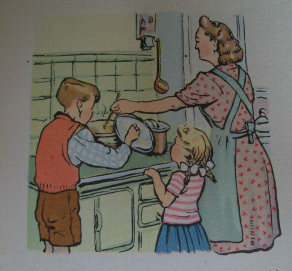
Published on May 31, 2014 06:47
May 24, 2014
Giving Away a copy of A Woman of Honour
I’m giving away an advance copy of my new novella, “A Woman of Honour” through Rafflecopter. To be honest, I’m not sure how this all works so please bear with me. If you have any problems placing an entry just comment of this blog or email me using the button at the top of this page. Thanks
Back Cover
Duncan Campbell wakes to discover he is imprisoned with a woman in his enemy's dungeon in the Highlands of Scotland. The disenchanted warrior hopes his last few moments on earth will be spent in the arms of the sweet-voiced Isabel. If only she will cooperate.
Isabel Douglas has no intention of obliging the crude captive. The penniless noblewoman considers herself too tall and thin to be desirable. She intends to become a nun. But first, disguised as a boy, she must deliver an important letter to Scotland's hero in hiding, King Robert the Bruce.
Together, the pair make a daring escape that plunges them into the bleak countryside in the middle of winter. In the struggle to survive, they learn the true strength of their feelings for each other. But when Duncan's animosity towards the king becomes evident, Isabel must decide between her heart and her country.
a Rafflecopter giveaway
Back Cover
Duncan Campbell wakes to discover he is imprisoned with a woman in his enemy's dungeon in the Highlands of Scotland. The disenchanted warrior hopes his last few moments on earth will be spent in the arms of the sweet-voiced Isabel. If only she will cooperate.
Isabel Douglas has no intention of obliging the crude captive. The penniless noblewoman considers herself too tall and thin to be desirable. She intends to become a nun. But first, disguised as a boy, she must deliver an important letter to Scotland's hero in hiding, King Robert the Bruce.
Together, the pair make a daring escape that plunges them into the bleak countryside in the middle of winter. In the struggle to survive, they learn the true strength of their feelings for each other. But when Duncan's animosity towards the king becomes evident, Isabel must decide between her heart and her country.
a Rafflecopter giveaway
Published on May 24, 2014 11:02
Why The Irish Converted to Christianity?
I grew up in a very Irish household and assumed that the Irish had always been Christian, but of course, that’s not true. Until the 6th century most Irish people were pagans, worshipping a pantheon of Gods and Goddesses that controlled everything in the natural world, including their harvests. Their gods had served them well for thousands of years, so why did the Irish abandon them? In the book In Search of Ancient Ireland by Carmel MacCaffrey and Leo Eaton it states.
“When Patrick died 492 – or 496, depending on whichever version of the annals one prefers – he had been spreading Christianity among the Irish for more than sixty years. But Ireland had not changed much over that time. Pockets of Christianity existed around royal courts and local centres of power, where Patrick and other early missionaries had been successful, but the vast majority of the country was still pagan.”
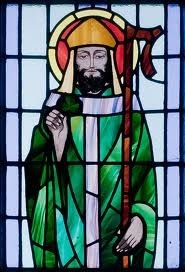 St. Patrick I suppose we have to look at it from their point of view. Would you give up on the gods that were making your harvests plentiful? Of course not, you’d stick with what works.
St. Patrick I suppose we have to look at it from their point of view. Would you give up on the gods that were making your harvests plentiful? Of course not, you’d stick with what works. Oh I know, everyone thinks that Patrick converted the Irish to Christianity in the 5th century, but the Cult of St. Patrick wasn’t developed until the 7th century with the goal of making the church in Armagh the central church of Celtic Christianity.
Why did the monks of Armagh choose Patrick? I’m not entirely sure, but it could be because of his writings. His autobiography is called The Confession. When you read his words you get the impression that he was a very humble man, a sinner, like the rest of us, someone with which the common man could relate.
“My name is Patrick. I am a sinner, a simple country person, and the least of all believers. I am looked down upon by many. My father was Calpornius. He was a deacon; his father was Potitus, a priest, who lived at Bannavem Taburniae”
 Lake Ilopango So if it wasn’t St Patrick and the other missionaries, what forced the Irish people to adopt this new religion? It seems that the answer lies in Central America, around 536 a volcano under Lake Ilopango erupted causing a catastrophic event. In the Mediterranean it was reported that the skies turned red. The eruption had a global impact causing widespread famine and disease, plunging Europe into the Dark Ages. Recently, scientists have compared Ice core samples from the Greenland Ice sheet Project with the Irish Annals
Lake Ilopango So if it wasn’t St Patrick and the other missionaries, what forced the Irish people to adopt this new religion? It seems that the answer lies in Central America, around 536 a volcano under Lake Ilopango erupted causing a catastrophic event. In the Mediterranean it was reported that the skies turned red. The eruption had a global impact causing widespread famine and disease, plunging Europe into the Dark Ages. Recently, scientists have compared Ice core samples from the Greenland Ice sheet Project with the Irish Annalsclick to read the BBC article on this study The Annals are sparsely written and hardly ever mention women, children, or peasants just noblemen and notable events (So none of my ancestors are mentioned in them.) Here are the entries following the Lake Ilopango eruption.
Annals of Ulster, 536AD Failure of bread
Annals of Inisfallen, 537AD Failure of bread
We also know that following the famine there was a plague that swept through Europe. This is also mentioned,
Chronicon Scotorum, 541AD A great mortality which is called Belefeth, in which Mobhi Clairinech, whose name is Bercan, 'prorectano poetae', perished.
For me, this makes the geological event, all the more significant because it puts a human face on the suffering it inflicted. The Irish starved. Their crops failed and their animals died. They believed their gods had deserted them and converted to Christianity. It is after this period that the great monasteries are built and we see a flowering of Irish culture. This wasn’t as big a leap as you might expect. Monks in this period were married men with families. It wasn’t until the 12th century that monks and priests were required to be celibate. And so the Celtic Church with its monasteries that coveted the written word came into being all because of a volcano in Central America.
Published on May 24, 2014 06:54
May 17, 2014
Eleanor of Aquitaine
No blog on the medieval world would be complete without a post about Eleanor of Aquitaine. There are those who consider her the most enlightened woman of her time and others who think she was foolish and vengeful.
Born in 1122, she was the daughter of William X, Duke of Aquitaine, and Count of Poitiers. William’s lands where estimated to be equal or larger than the king of France. It is no surprise that when her father and brother died suddenly in 1137, she found herself married to Louis, later to become Louis VII of France.
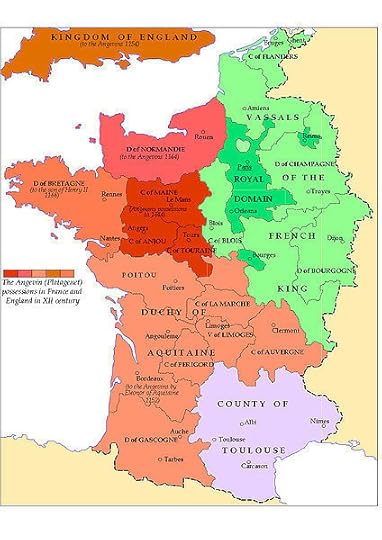 Eleanor's Lands, Aquitaine and Poitiers are shown in pink.
Eleanor's Lands, Aquitaine and Poitiers are shown in pink.
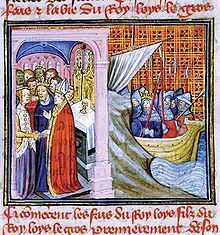 Wedding of Eleanor and Louis By all accounts, the marriage went well at first. Eleanor gave Louis a daughter, but their relationship deteriorated when Eleanor joined him on the Second Crusade. The scandal started when the pair reached the Holy Land and Eleanor sided with her Uncle Raymond against Louis. Accounts written after the fact, by William of Tyre and John of Salisbury, claim that Eleanor had an affair with Raymond, but neither of these are firsthand accounts and both writers were known supporters of the French king, so it’s hard to believe that they are completely accurate.
Wedding of Eleanor and Louis By all accounts, the marriage went well at first. Eleanor gave Louis a daughter, but their relationship deteriorated when Eleanor joined him on the Second Crusade. The scandal started when the pair reached the Holy Land and Eleanor sided with her Uncle Raymond against Louis. Accounts written after the fact, by William of Tyre and John of Salisbury, claim that Eleanor had an affair with Raymond, but neither of these are firsthand accounts and both writers were known supporters of the French king, so it’s hard to believe that they are completely accurate.
It is known that Eleanor spoke out against her husband’s military decisions, and agreed openly with her uncle, an action that at the time was considered scandalous. I think the real problem was that Eleanor didn’t respect Louis as a military leader. She was a rich, powerful, opinionated woman and so instead of bending to her husband’s will, as was expected, she spoke out against him. She also blamed him for the death of Raymond who was killed by the Muslims soon after Louis’ withdrawal from the Holy Land. Louis, for his part was disappointed that Eleanor had failed to give him a son. In 1149 she appealed to Pope Eugene for a divorce, claiming they were too closely related to have ever married in the first place.
Unfortunately, the Pope refused to grant her an annulment. Claiming the marriage was sound, he attempted to reconcile the couple. Eleanor was virtually forced into Louis’ bed. This led to her giving birth to their second daughter in 1151. (It bothers me that she was forced to sleep with a man she hated, and that having a daughter was considered a shortcoming.) The fact that she had failed to provide Louis with a son marked the end of their marriage. The pope could no longer force them to stay together and in 1152 he granted their divorce, on the grounds of consanguinity. (They were too closely related.) But surprisingly their daughters were declared legitimate and Eleanor’s lands were returned to her.
 Eleanor and Henry II Within eight weeks of her divorce Eleanor married Henry Plantagenet, even though she was even more closely related to him than she was Louis. Henry became king of England in 1154. Their marriage seemed to go well for the first fourteen years or so. The couple had five sons and three daughters. And the always-active Eleanor played a role in running Henry’s kingdom. But her marriage turned hostile in 1166 when it became known that Henry had fallen in love with another woman, Rosamund Clifford.
Eleanor and Henry II Within eight weeks of her divorce Eleanor married Henry Plantagenet, even though she was even more closely related to him than she was Louis. Henry became king of England in 1154. Their marriage seemed to go well for the first fourteen years or so. The couple had five sons and three daughters. And the always-active Eleanor played a role in running Henry’s kingdom. But her marriage turned hostile in 1166 when it became known that Henry had fallen in love with another woman, Rosamund Clifford.
In 1173 Henry’s son also named Henry, in a dispute over his inheritance, took up arms against his father, instigating a revolt. He was joined by his brothers, Richard and Geoffrey. Some say that this was Eleanor’s doing, in revenge for her husband’s affair, and others say that her sons came to her for help, and she couldn’t turn them away. It is known that relationships within the royal family were always acrimonious. Bickering and disagreements were commonplace, whatever the motivation, the revolt was short lived and doomed to fail. Henry the younger was defeated by his father. While on the run, he contracted dysentery and died. His final request was that his father would show his mother mercy. King Henry imprisoned Eleanor. She remained under guard until Henry II’s death in 1189.
Her second son, Richard, who was known as Richard the Lionheart, was crowned that same year and promptly declared Eleanor regent. He joined the Third Crusade and left, it is thought that he spent less than six months in England during his ten years as king. Eleanor, who was now in her late sixties, showed no signs of slowing down, she seemed to enjoy her time as head of state, and it is a role for which she was eminently suited.
On his return from the Holy Land, Richard was captured and held for ransom in Germany. Eleanor negotiated his release, despite the fact that her younger son, John, tried to pay the Germans to keep him imprisoned.
Richard died in 1199 in his mother’s arms after being shot in the arm during a siege. The wound turned gangrenous causing a long and painful death.
Now his younger brother, John, took the throne and Eleanor’s active role in English politics ended, although she was still a strong presence in Aquitaine, where she spent her final years. She died in 1204 having outlived eight of her ten children and was buried in Fontevrault next to her husband, Henry.
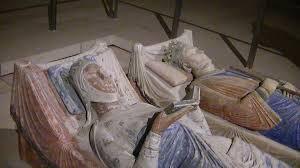 I have avoided mentioning her influence on culture and courtly love, mainly because scholars today have their doubts as to whether Eleanor’s Court of Love ever existed.
I have avoided mentioning her influence on culture and courtly love, mainly because scholars today have their doubts as to whether Eleanor’s Court of Love ever existed.
To me she seems to have been a take-no-prisoners kind of woman. She was strong-willed and obviously not afraid to speak her mind. And she clearly didn’t love her first husband because she didn’t care about humiliating him. There are those who have accused her of having affairs, but this is hard to prove, especially after eight hundred years. But she was a strong-minded, wealthy woman and powerful people don’t always follow the same rules as the rest of us.
There is no doubt in my mind that if Eleanor were alive today she would be a politician, captain of industry or military leader. She was educated, well-read, and articulate, things that for us are positive attributes but in the twelfth century these were attributes more suited to a man. Put simply, I believe she was a woman who was out of step with her time.
 Eleanor's palace at Poitiers as it appears today.
Eleanor's palace at Poitiers as it appears today.
Born in 1122, she was the daughter of William X, Duke of Aquitaine, and Count of Poitiers. William’s lands where estimated to be equal or larger than the king of France. It is no surprise that when her father and brother died suddenly in 1137, she found herself married to Louis, later to become Louis VII of France.
 Eleanor's Lands, Aquitaine and Poitiers are shown in pink.
Eleanor's Lands, Aquitaine and Poitiers are shown in pink.
 Wedding of Eleanor and Louis By all accounts, the marriage went well at first. Eleanor gave Louis a daughter, but their relationship deteriorated when Eleanor joined him on the Second Crusade. The scandal started when the pair reached the Holy Land and Eleanor sided with her Uncle Raymond against Louis. Accounts written after the fact, by William of Tyre and John of Salisbury, claim that Eleanor had an affair with Raymond, but neither of these are firsthand accounts and both writers were known supporters of the French king, so it’s hard to believe that they are completely accurate.
Wedding of Eleanor and Louis By all accounts, the marriage went well at first. Eleanor gave Louis a daughter, but their relationship deteriorated when Eleanor joined him on the Second Crusade. The scandal started when the pair reached the Holy Land and Eleanor sided with her Uncle Raymond against Louis. Accounts written after the fact, by William of Tyre and John of Salisbury, claim that Eleanor had an affair with Raymond, but neither of these are firsthand accounts and both writers were known supporters of the French king, so it’s hard to believe that they are completely accurate.It is known that Eleanor spoke out against her husband’s military decisions, and agreed openly with her uncle, an action that at the time was considered scandalous. I think the real problem was that Eleanor didn’t respect Louis as a military leader. She was a rich, powerful, opinionated woman and so instead of bending to her husband’s will, as was expected, she spoke out against him. She also blamed him for the death of Raymond who was killed by the Muslims soon after Louis’ withdrawal from the Holy Land. Louis, for his part was disappointed that Eleanor had failed to give him a son. In 1149 she appealed to Pope Eugene for a divorce, claiming they were too closely related to have ever married in the first place.
Unfortunately, the Pope refused to grant her an annulment. Claiming the marriage was sound, he attempted to reconcile the couple. Eleanor was virtually forced into Louis’ bed. This led to her giving birth to their second daughter in 1151. (It bothers me that she was forced to sleep with a man she hated, and that having a daughter was considered a shortcoming.) The fact that she had failed to provide Louis with a son marked the end of their marriage. The pope could no longer force them to stay together and in 1152 he granted their divorce, on the grounds of consanguinity. (They were too closely related.) But surprisingly their daughters were declared legitimate and Eleanor’s lands were returned to her.
 Eleanor and Henry II Within eight weeks of her divorce Eleanor married Henry Plantagenet, even though she was even more closely related to him than she was Louis. Henry became king of England in 1154. Their marriage seemed to go well for the first fourteen years or so. The couple had five sons and three daughters. And the always-active Eleanor played a role in running Henry’s kingdom. But her marriage turned hostile in 1166 when it became known that Henry had fallen in love with another woman, Rosamund Clifford.
Eleanor and Henry II Within eight weeks of her divorce Eleanor married Henry Plantagenet, even though she was even more closely related to him than she was Louis. Henry became king of England in 1154. Their marriage seemed to go well for the first fourteen years or so. The couple had five sons and three daughters. And the always-active Eleanor played a role in running Henry’s kingdom. But her marriage turned hostile in 1166 when it became known that Henry had fallen in love with another woman, Rosamund Clifford. In 1173 Henry’s son also named Henry, in a dispute over his inheritance, took up arms against his father, instigating a revolt. He was joined by his brothers, Richard and Geoffrey. Some say that this was Eleanor’s doing, in revenge for her husband’s affair, and others say that her sons came to her for help, and she couldn’t turn them away. It is known that relationships within the royal family were always acrimonious. Bickering and disagreements were commonplace, whatever the motivation, the revolt was short lived and doomed to fail. Henry the younger was defeated by his father. While on the run, he contracted dysentery and died. His final request was that his father would show his mother mercy. King Henry imprisoned Eleanor. She remained under guard until Henry II’s death in 1189.
Her second son, Richard, who was known as Richard the Lionheart, was crowned that same year and promptly declared Eleanor regent. He joined the Third Crusade and left, it is thought that he spent less than six months in England during his ten years as king. Eleanor, who was now in her late sixties, showed no signs of slowing down, she seemed to enjoy her time as head of state, and it is a role for which she was eminently suited.
On his return from the Holy Land, Richard was captured and held for ransom in Germany. Eleanor negotiated his release, despite the fact that her younger son, John, tried to pay the Germans to keep him imprisoned.
Richard died in 1199 in his mother’s arms after being shot in the arm during a siege. The wound turned gangrenous causing a long and painful death.
Now his younger brother, John, took the throne and Eleanor’s active role in English politics ended, although she was still a strong presence in Aquitaine, where she spent her final years. She died in 1204 having outlived eight of her ten children and was buried in Fontevrault next to her husband, Henry.
 I have avoided mentioning her influence on culture and courtly love, mainly because scholars today have their doubts as to whether Eleanor’s Court of Love ever existed.
I have avoided mentioning her influence on culture and courtly love, mainly because scholars today have their doubts as to whether Eleanor’s Court of Love ever existed.To me she seems to have been a take-no-prisoners kind of woman. She was strong-willed and obviously not afraid to speak her mind. And she clearly didn’t love her first husband because she didn’t care about humiliating him. There are those who have accused her of having affairs, but this is hard to prove, especially after eight hundred years. But she was a strong-minded, wealthy woman and powerful people don’t always follow the same rules as the rest of us.
There is no doubt in my mind that if Eleanor were alive today she would be a politician, captain of industry or military leader. She was educated, well-read, and articulate, things that for us are positive attributes but in the twelfth century these were attributes more suited to a man. Put simply, I believe she was a woman who was out of step with her time.
 Eleanor's palace at Poitiers as it appears today.
Eleanor's palace at Poitiers as it appears today.
Published on May 17, 2014 06:27
May 13, 2014
Release Date for A Woman of Honour
My publisher, The Wild Rose Press, has just given me a release date for my novella, A Woman of Honour. It will be available worldwide on 27th August 2014
Duncan Campbell wakes to discover he is imprisoned with a woman in his enemy's dungeon in the Highlands of Scotland. The disenchanted warrior hopes his last few moments on earth will be spent in the arms of the sweet-voiced Isabel. If only she will cooperate.
Isabel Douglas has no intention of obliging the crude captive. The penniless noblewoman considers herself too tall and thin to be desirable. She intends to become a nun. But first, disguised as a boy, she must deliver an important letter to Scotland's hero in hiding, King Robert the Bruce.
Together, the pair make a daring escape that plunges them into the bleak countryside in the middle of winter. In the struggle to survive, they learn the true strength of their feelings for each other. But when Duncan's animosity towards the king becomes evident, Isabel must decide between her heart and her country.
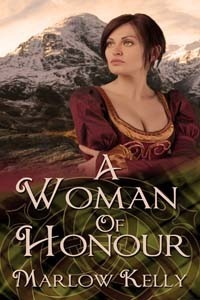
Duncan Campbell wakes to discover he is imprisoned with a woman in his enemy's dungeon in the Highlands of Scotland. The disenchanted warrior hopes his last few moments on earth will be spent in the arms of the sweet-voiced Isabel. If only she will cooperate.
Isabel Douglas has no intention of obliging the crude captive. The penniless noblewoman considers herself too tall and thin to be desirable. She intends to become a nun. But first, disguised as a boy, she must deliver an important letter to Scotland's hero in hiding, King Robert the Bruce.
Together, the pair make a daring escape that plunges them into the bleak countryside in the middle of winter. In the struggle to survive, they learn the true strength of their feelings for each other. But when Duncan's animosity towards the king becomes evident, Isabel must decide between her heart and her country.

Published on May 13, 2014 05:33
May 10, 2014
Surviving Disney
I’ve just returned from a wonderful week vacationing in Disneyworld, Florida, and thought I would share some of my experiences for those of you who are planning a trip to any of Disney’s theme parks. If you’ve never contemplated a family holiday at Disney, I have to say, I understand. It’s busy. There are line-ups everywhere and the crowds are huge, but it can also be a wonderful vacation that can be shared and enjoyed by everyone from grandparents to toddlers.
 To start off, this is a walking holiday. You will walk and then walk some more and when you stop walking you will have to stand. Wear good shoes and if you have small children bring a stroller. If you have elderly or infirmed relatives, rent an electric scooter. The one we rented (No it wasn’t for me) cost about $30 a day and was worth every penny. The bus drivers and Disney staff are excellent at catering to people with special needs. And if you stay at one of the Disneyworld resorts transport to and from the parks is free.
To start off, this is a walking holiday. You will walk and then walk some more and when you stop walking you will have to stand. Wear good shoes and if you have small children bring a stroller. If you have elderly or infirmed relatives, rent an electric scooter. The one we rented (No it wasn’t for me) cost about $30 a day and was worth every penny. The bus drivers and Disney staff are excellent at catering to people with special needs. And if you stay at one of the Disneyworld resorts transport to and from the parks is free.
 All your information including meal plan, hotel, park entrance and FastPass + is held on the Magic Band. If you are travelling with a person with special dietary needs, whether it is an allergy, a gluten intolerance, or diabetes, the restaurant staff is excellent. We had a child travelling with us who had a peanut allergy. At every single restaurant we visited the chef came our table to discuss the appropriate menu options, not only was our child aware of the safe choices, but was also provided with a peanut free alternative dessert, something that is a rare treat.
All your information including meal plan, hotel, park entrance and FastPass + is held on the Magic Band. If you are travelling with a person with special dietary needs, whether it is an allergy, a gluten intolerance, or diabetes, the restaurant staff is excellent. We had a child travelling with us who had a peanut allergy. At every single restaurant we visited the chef came our table to discuss the appropriate menu options, not only was our child aware of the safe choices, but was also provided with a peanut free alternative dessert, something that is a rare treat.
click here for Disney's dietary policy A peanut free Mickey waffle
A peanut free Mickey waffle
 Green Mickey in the Epcot Center I have chronic motion sickness and am not a fan of rollercoasters, but there is so much more to Disney than theme park rides. There is always something to see and do, from shows to safari tours. Most of the attractions have long lines. You can wait for an hour to get on a ride, but Disney does have a solution. You can purchase a FastPass +. Now I can’t tell you the prices, but I would contact a Disney representative before you go for more information. I do suggest that if your budget allows you get one. It works by allowing you to schedule your rides and attractions. You book the time you want to ride and then show up at that time, there is a special entrance for FastPass + holders, so there’s no need to wait in the long line up.
Green Mickey in the Epcot Center I have chronic motion sickness and am not a fan of rollercoasters, but there is so much more to Disney than theme park rides. There is always something to see and do, from shows to safari tours. Most of the attractions have long lines. You can wait for an hour to get on a ride, but Disney does have a solution. You can purchase a FastPass +. Now I can’t tell you the prices, but I would contact a Disney representative before you go for more information. I do suggest that if your budget allows you get one. It works by allowing you to schedule your rides and attractions. You book the time you want to ride and then show up at that time, there is a special entrance for FastPass + holders, so there’s no need to wait in the long line up.
click for more about fastpass + Disney staff are courteous, friendly, and helpful. They know that for most of us a vacation at one of their theme parks is a once in a lifetime event. For me this was a holiday full of family memories that can be cherished forever. The castle in the Magic Kingdom at night
The castle in the Magic Kingdom at night
 To start off, this is a walking holiday. You will walk and then walk some more and when you stop walking you will have to stand. Wear good shoes and if you have small children bring a stroller. If you have elderly or infirmed relatives, rent an electric scooter. The one we rented (No it wasn’t for me) cost about $30 a day and was worth every penny. The bus drivers and Disney staff are excellent at catering to people with special needs. And if you stay at one of the Disneyworld resorts transport to and from the parks is free.
To start off, this is a walking holiday. You will walk and then walk some more and when you stop walking you will have to stand. Wear good shoes and if you have small children bring a stroller. If you have elderly or infirmed relatives, rent an electric scooter. The one we rented (No it wasn’t for me) cost about $30 a day and was worth every penny. The bus drivers and Disney staff are excellent at catering to people with special needs. And if you stay at one of the Disneyworld resorts transport to and from the parks is free.  All your information including meal plan, hotel, park entrance and FastPass + is held on the Magic Band. If you are travelling with a person with special dietary needs, whether it is an allergy, a gluten intolerance, or diabetes, the restaurant staff is excellent. We had a child travelling with us who had a peanut allergy. At every single restaurant we visited the chef came our table to discuss the appropriate menu options, not only was our child aware of the safe choices, but was also provided with a peanut free alternative dessert, something that is a rare treat.
All your information including meal plan, hotel, park entrance and FastPass + is held on the Magic Band. If you are travelling with a person with special dietary needs, whether it is an allergy, a gluten intolerance, or diabetes, the restaurant staff is excellent. We had a child travelling with us who had a peanut allergy. At every single restaurant we visited the chef came our table to discuss the appropriate menu options, not only was our child aware of the safe choices, but was also provided with a peanut free alternative dessert, something that is a rare treat.click here for Disney's dietary policy
 A peanut free Mickey waffle
A peanut free Mickey waffle
 Green Mickey in the Epcot Center I have chronic motion sickness and am not a fan of rollercoasters, but there is so much more to Disney than theme park rides. There is always something to see and do, from shows to safari tours. Most of the attractions have long lines. You can wait for an hour to get on a ride, but Disney does have a solution. You can purchase a FastPass +. Now I can’t tell you the prices, but I would contact a Disney representative before you go for more information. I do suggest that if your budget allows you get one. It works by allowing you to schedule your rides and attractions. You book the time you want to ride and then show up at that time, there is a special entrance for FastPass + holders, so there’s no need to wait in the long line up.
Green Mickey in the Epcot Center I have chronic motion sickness and am not a fan of rollercoasters, but there is so much more to Disney than theme park rides. There is always something to see and do, from shows to safari tours. Most of the attractions have long lines. You can wait for an hour to get on a ride, but Disney does have a solution. You can purchase a FastPass +. Now I can’t tell you the prices, but I would contact a Disney representative before you go for more information. I do suggest that if your budget allows you get one. It works by allowing you to schedule your rides and attractions. You book the time you want to ride and then show up at that time, there is a special entrance for FastPass + holders, so there’s no need to wait in the long line up. click for more about fastpass + Disney staff are courteous, friendly, and helpful. They know that for most of us a vacation at one of their theme parks is a once in a lifetime event. For me this was a holiday full of family memories that can be cherished forever.
 The castle in the Magic Kingdom at night
The castle in the Magic Kingdom at night
Published on May 10, 2014 06:25
May 3, 2014
Baby Animals
I’m on holiday this week and as I'm enjoying the sun in Florida, I thought would share some of my happiness with you. I love baby animals, I know that’s not to everyone’s tastes, but give it a chance and maybe, just maybe some of these photos will make you smile.
 Maltese Puppy
Maltese Puppy  Baby Chipmunk
Baby Chipmunk  Jack Russell Puppies
Jack Russell Puppies  The march to the sea
The march to the sea 
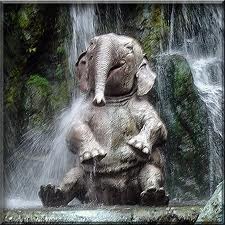 Taking a shower
Taking a shower 


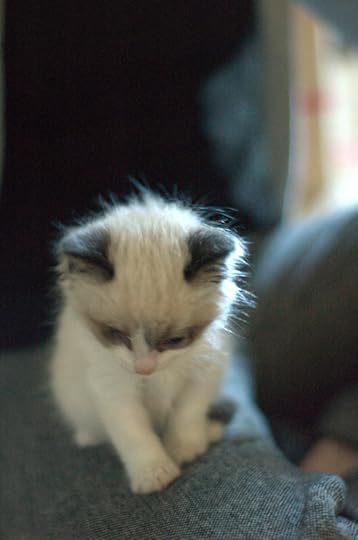
Published on May 03, 2014 05:13
April 26, 2014
Isabella of France She-Wolf or Over protective Mother
I have read accounts where Isabella of France, the wife of Edward II, is labelled a she-wolf. She is described as being so vicious, and so ambitious that she murdered her husband in an attempt to gain power for herself. But is that really true? To understand Isabella you have to understand her husband, Edward II
I would like to point out that the Isabella depicted in Mel Gibson’s movie Braveheart is wholly fictional and while it is a wonderfully entertaining story, it is not a documentary and the scriptwriters did take some poetic licence with the facts. The real Isabella never met Edward I. Furthermore, at the time of Wallace’s death she was about ten years old, so she didn’t have an affair with him or give birth to his son.
We don’t know the exact year of Isabella’s birth, probably because she was a girl and therefore not important. (That’s not my opinion, but rather the attitude of the times.) Her father, Phillip IV, has been described as a cold, unemotional man and his contemporaries called him a human statue. He saw no problem in marrying his pre-teen daughter to a man in his twenties whose sexuality was already in question.
I rather doubt that Isabella expected love from her marriage. After all, the nobility didn’t marry for love. Their marriages were contracts in which she would have been expected to support her husband and bear his children, and for most of her married life Isabella did just that. The biggest problem with Isabella’s marriage wasn’t Edward’s sexual orientation. I’m sure there have been plenty of homosexuals in the past who have ruled successfully and had very good working relationships with their spouses. No, Edward’s preferences in the bedroom were not the problem; the real issue was the fact that he was a weak man who always submitted to a stronger male. It seems that when Edward married Isabella he already had a favorite, a partner with which he shared his throne. The man in question was Piers Gaveston, a handsome, athletic man. They met in 1300 and became inseparable.
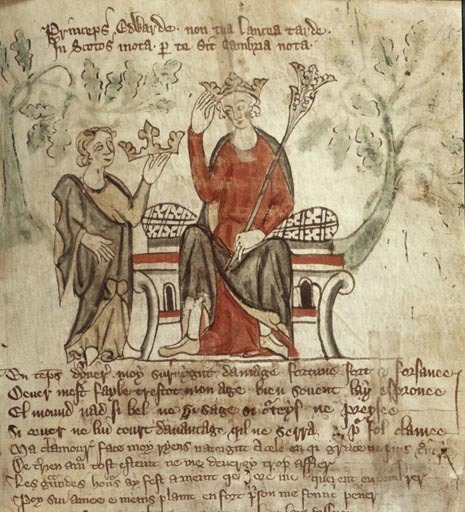 Edward II By the time of Edward and Isabella’s marriage in 1308, Edward had been in his relationship with Piers for eight years. Isabella was about twelve years old and although she had friends, and relations in court nothing could have prepared her for marriage to a man who was so completely dominated by his partner. To give you an example of just how subjugated Edward was, when he travelled to France to marry Isabella he left Piers in charge of England. The English barons were outraged, Piers wasn’t even nobility. When Edward returned with his young bride, Piers was wearing the jewelry Phillip had given Edward as a wedding gift. That did not get things off on the right foot, and things were rocky for a while, but to give Piers his credit he did try to get along with Isabella, and give her the respect due to her as queen. But more credit is due Isabella, she was a dutiful wife who suffered through her husband’s humiliating infatuation. She even intervened diplomatically on Edward’s behalf with her father and then later her brother Charles IV, ensuring Edward’s place on the English throne.
Edward II By the time of Edward and Isabella’s marriage in 1308, Edward had been in his relationship with Piers for eight years. Isabella was about twelve years old and although she had friends, and relations in court nothing could have prepared her for marriage to a man who was so completely dominated by his partner. To give you an example of just how subjugated Edward was, when he travelled to France to marry Isabella he left Piers in charge of England. The English barons were outraged, Piers wasn’t even nobility. When Edward returned with his young bride, Piers was wearing the jewelry Phillip had given Edward as a wedding gift. That did not get things off on the right foot, and things were rocky for a while, but to give Piers his credit he did try to get along with Isabella, and give her the respect due to her as queen. But more credit is due Isabella, she was a dutiful wife who suffered through her husband’s humiliating infatuation. She even intervened diplomatically on Edward’s behalf with her father and then later her brother Charles IV, ensuring Edward’s place on the English throne.
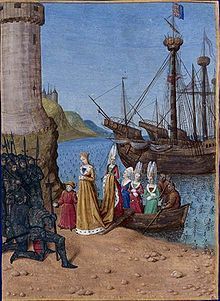 Isabella Landing in England In 1312, Piers was captured by the English barons, who had become increasing unhappy with his influence on the king and his use of royal favour to bolster his own position. He was executed. This devastated Edward, but forced him to rely on Isabella and for a while they got along quite well. It interesting to note that Isabella’s first child, Edward 111, (No they didn’t have much imagination when it came to names.) was born in 1312. In fact, three of her four children were born in this period between favorites.
Isabella Landing in England In 1312, Piers was captured by the English barons, who had become increasing unhappy with his influence on the king and his use of royal favour to bolster his own position. He was executed. This devastated Edward, but forced him to rely on Isabella and for a while they got along quite well. It interesting to note that Isabella’s first child, Edward 111, (No they didn’t have much imagination when it came to names.) was born in 1312. In fact, three of her four children were born in this period between favorites.
Unfortunately, in 1318 Edward chose a new favorite, Hugh Despenser. Now Hugh was a thoroughly evil, greedy man who used his relationship with the king to line his own pockets. He would imprison widows until they signed their lands over to him and it is believed he even broke the limbs of a noble woman named Lady Barat, torturing her, until she agreed to give him her lands. He was completely unscrupulous and used his relationship with the king to seize lands, and punish enemies. By 1320 Hugh dispenser was the defacto ruler of England, a circumstance that enraged the populace rich and poor.
Hugh was a threat to Isabella and her children. She spent five years pretending to like him, but the fact is that sooner or later he would have turned against her, and she knew that Edward would never stand up to his favorite. In 1325, under the guise of a diplomatic mission, she fled to France. It is here that she met Roger Mortimer, a baron in exile. The pair became lovers and conspirators, planning to end the reign of Edward and Hugh. With the support of a group of English exiles, they raised a small army and in September 1326 invaded England, landing in Essex. But here’s the thing, circumstances were so bad in England that when Edward called for support from the barons and general population no one came to his aid. He summoned 2000 men to meet the invaders at Orwell, but only 55 showed up. Instead of amassing a huge force to repel the invaders the barons, who hated the Hugh Despenser, joined the invasion force. When Edward and Hugh realised they had no allies they fled, heading for Wales. Isabella and Mortimer were in pursuit and within two months Edward and Hugh were captured.
Within ten days of his arrest, Hugh was declared a traitor, put on trial, and executed. Edward was a different problem. No one knew how to proceed, a king had never been deposed before, but they couldn’t put him back on the throne. His failings, both personal and political had led the kingdom to disaster. He was held prisoner first at Monmouth Castle and later at Kenilworth Castle. Finally, in 1327 he agreed to abdicate in favour of his son Edward III.
As Edward III was still a minor Isabella and her lover, Mortimer, ruled as regents in his place. As a diplomat Isabella came into her own. She negotiated peace with the Scots ending a war that had lasted 32 years. In late 1327 Mortimer had Edward II killed. This was a necessity for them as plots to have the Edward II reclaim his thrown kept resurfacing and in the end killing him was the only way to ensure peace. Unfortunately, Isabella and Mortimer had learned nothing from the plight of Edward and Hugh. They, too, used their reign to amass a fortune for themselves. They became massively unpopular, sparking turmoil and unrest in England.
In 1330 Edward III who was now eighteen arranged a coup and seized power from his mother. The young king had Mortimer brought up on fourteen charges one of which was murdering his father Edward II. Mortimer was executed immediately. Isabella was spared, but she was banished from court and sent to live at Castle Rising, where she lived out her days in relative luxury. It’s known that she went hunting, had many visitors including her son and grandchildren, but was never in court again.
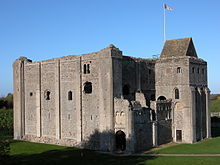 Castle Rising I think more was made of Edward’s sexual preferences than his inability to rule because under church law homosexuality was considered heresy, and committing heresy made Edward unfit to be king. Just being a useless king wasn’t a good enough reason to get rid of him. In the medieval world the king was chosen by God, and that meant no one could challenge him. But chosen or not, the fact was that he was completely inept.
Castle Rising I think more was made of Edward’s sexual preferences than his inability to rule because under church law homosexuality was considered heresy, and committing heresy made Edward unfit to be king. Just being a useless king wasn’t a good enough reason to get rid of him. In the medieval world the king was chosen by God, and that meant no one could challenge him. But chosen or not, the fact was that he was completely inept.
Were Isabella’s action’s justified? Maybe. Her uprising against her husband was definitely popular. And I don’t think she was as calculating as she has been made out to be. For most of her marriage she sided with her husband against those who wanted to overthrow him, but Edward’s relationship with Hugh Despenser pushed her to a breaking point where she couldn’t take anymore. Personally, I would describe her as a woman pushed to brink of desperation rather than a she-wolf. If I had written her story I would have made her a better regent. She didn’t do a very good job of ruling England, but she did save the throne for her son.
I would like to point out that the Isabella depicted in Mel Gibson’s movie Braveheart is wholly fictional and while it is a wonderfully entertaining story, it is not a documentary and the scriptwriters did take some poetic licence with the facts. The real Isabella never met Edward I. Furthermore, at the time of Wallace’s death she was about ten years old, so she didn’t have an affair with him or give birth to his son.
We don’t know the exact year of Isabella’s birth, probably because she was a girl and therefore not important. (That’s not my opinion, but rather the attitude of the times.) Her father, Phillip IV, has been described as a cold, unemotional man and his contemporaries called him a human statue. He saw no problem in marrying his pre-teen daughter to a man in his twenties whose sexuality was already in question.
I rather doubt that Isabella expected love from her marriage. After all, the nobility didn’t marry for love. Their marriages were contracts in which she would have been expected to support her husband and bear his children, and for most of her married life Isabella did just that. The biggest problem with Isabella’s marriage wasn’t Edward’s sexual orientation. I’m sure there have been plenty of homosexuals in the past who have ruled successfully and had very good working relationships with their spouses. No, Edward’s preferences in the bedroom were not the problem; the real issue was the fact that he was a weak man who always submitted to a stronger male. It seems that when Edward married Isabella he already had a favorite, a partner with which he shared his throne. The man in question was Piers Gaveston, a handsome, athletic man. They met in 1300 and became inseparable.
 Edward II By the time of Edward and Isabella’s marriage in 1308, Edward had been in his relationship with Piers for eight years. Isabella was about twelve years old and although she had friends, and relations in court nothing could have prepared her for marriage to a man who was so completely dominated by his partner. To give you an example of just how subjugated Edward was, when he travelled to France to marry Isabella he left Piers in charge of England. The English barons were outraged, Piers wasn’t even nobility. When Edward returned with his young bride, Piers was wearing the jewelry Phillip had given Edward as a wedding gift. That did not get things off on the right foot, and things were rocky for a while, but to give Piers his credit he did try to get along with Isabella, and give her the respect due to her as queen. But more credit is due Isabella, she was a dutiful wife who suffered through her husband’s humiliating infatuation. She even intervened diplomatically on Edward’s behalf with her father and then later her brother Charles IV, ensuring Edward’s place on the English throne.
Edward II By the time of Edward and Isabella’s marriage in 1308, Edward had been in his relationship with Piers for eight years. Isabella was about twelve years old and although she had friends, and relations in court nothing could have prepared her for marriage to a man who was so completely dominated by his partner. To give you an example of just how subjugated Edward was, when he travelled to France to marry Isabella he left Piers in charge of England. The English barons were outraged, Piers wasn’t even nobility. When Edward returned with his young bride, Piers was wearing the jewelry Phillip had given Edward as a wedding gift. That did not get things off on the right foot, and things were rocky for a while, but to give Piers his credit he did try to get along with Isabella, and give her the respect due to her as queen. But more credit is due Isabella, she was a dutiful wife who suffered through her husband’s humiliating infatuation. She even intervened diplomatically on Edward’s behalf with her father and then later her brother Charles IV, ensuring Edward’s place on the English throne. Isabella Landing in England In 1312, Piers was captured by the English barons, who had become increasing unhappy with his influence on the king and his use of royal favour to bolster his own position. He was executed. This devastated Edward, but forced him to rely on Isabella and for a while they got along quite well. It interesting to note that Isabella’s first child, Edward 111, (No they didn’t have much imagination when it came to names.) was born in 1312. In fact, three of her four children were born in this period between favorites.
Isabella Landing in England In 1312, Piers was captured by the English barons, who had become increasing unhappy with his influence on the king and his use of royal favour to bolster his own position. He was executed. This devastated Edward, but forced him to rely on Isabella and for a while they got along quite well. It interesting to note that Isabella’s first child, Edward 111, (No they didn’t have much imagination when it came to names.) was born in 1312. In fact, three of her four children were born in this period between favorites.Unfortunately, in 1318 Edward chose a new favorite, Hugh Despenser. Now Hugh was a thoroughly evil, greedy man who used his relationship with the king to line his own pockets. He would imprison widows until they signed their lands over to him and it is believed he even broke the limbs of a noble woman named Lady Barat, torturing her, until she agreed to give him her lands. He was completely unscrupulous and used his relationship with the king to seize lands, and punish enemies. By 1320 Hugh dispenser was the defacto ruler of England, a circumstance that enraged the populace rich and poor.
Hugh was a threat to Isabella and her children. She spent five years pretending to like him, but the fact is that sooner or later he would have turned against her, and she knew that Edward would never stand up to his favorite. In 1325, under the guise of a diplomatic mission, she fled to France. It is here that she met Roger Mortimer, a baron in exile. The pair became lovers and conspirators, planning to end the reign of Edward and Hugh. With the support of a group of English exiles, they raised a small army and in September 1326 invaded England, landing in Essex. But here’s the thing, circumstances were so bad in England that when Edward called for support from the barons and general population no one came to his aid. He summoned 2000 men to meet the invaders at Orwell, but only 55 showed up. Instead of amassing a huge force to repel the invaders the barons, who hated the Hugh Despenser, joined the invasion force. When Edward and Hugh realised they had no allies they fled, heading for Wales. Isabella and Mortimer were in pursuit and within two months Edward and Hugh were captured.
Within ten days of his arrest, Hugh was declared a traitor, put on trial, and executed. Edward was a different problem. No one knew how to proceed, a king had never been deposed before, but they couldn’t put him back on the throne. His failings, both personal and political had led the kingdom to disaster. He was held prisoner first at Monmouth Castle and later at Kenilworth Castle. Finally, in 1327 he agreed to abdicate in favour of his son Edward III.
As Edward III was still a minor Isabella and her lover, Mortimer, ruled as regents in his place. As a diplomat Isabella came into her own. She negotiated peace with the Scots ending a war that had lasted 32 years. In late 1327 Mortimer had Edward II killed. This was a necessity for them as plots to have the Edward II reclaim his thrown kept resurfacing and in the end killing him was the only way to ensure peace. Unfortunately, Isabella and Mortimer had learned nothing from the plight of Edward and Hugh. They, too, used their reign to amass a fortune for themselves. They became massively unpopular, sparking turmoil and unrest in England.
In 1330 Edward III who was now eighteen arranged a coup and seized power from his mother. The young king had Mortimer brought up on fourteen charges one of which was murdering his father Edward II. Mortimer was executed immediately. Isabella was spared, but she was banished from court and sent to live at Castle Rising, where she lived out her days in relative luxury. It’s known that she went hunting, had many visitors including her son and grandchildren, but was never in court again.
 Castle Rising I think more was made of Edward’s sexual preferences than his inability to rule because under church law homosexuality was considered heresy, and committing heresy made Edward unfit to be king. Just being a useless king wasn’t a good enough reason to get rid of him. In the medieval world the king was chosen by God, and that meant no one could challenge him. But chosen or not, the fact was that he was completely inept.
Castle Rising I think more was made of Edward’s sexual preferences than his inability to rule because under church law homosexuality was considered heresy, and committing heresy made Edward unfit to be king. Just being a useless king wasn’t a good enough reason to get rid of him. In the medieval world the king was chosen by God, and that meant no one could challenge him. But chosen or not, the fact was that he was completely inept. Were Isabella’s action’s justified? Maybe. Her uprising against her husband was definitely popular. And I don’t think she was as calculating as she has been made out to be. For most of her marriage she sided with her husband against those who wanted to overthrow him, but Edward’s relationship with Hugh Despenser pushed her to a breaking point where she couldn’t take anymore. Personally, I would describe her as a woman pushed to brink of desperation rather than a she-wolf. If I had written her story I would have made her a better regent. She didn’t do a very good job of ruling England, but she did save the throne for her son.
Published on April 26, 2014 06:27



